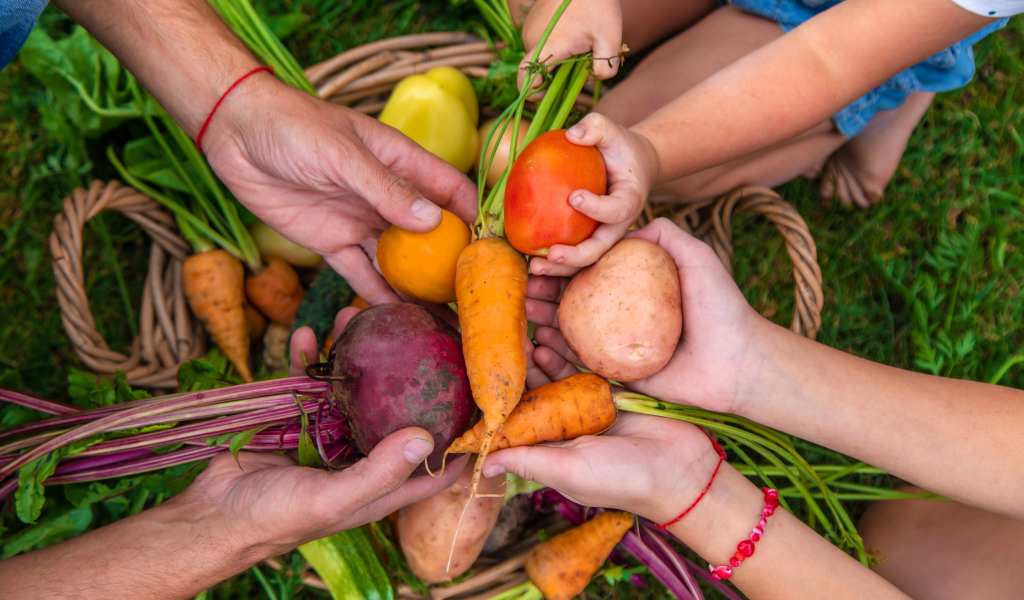Despite ambitious policies and well-intended programmes, food security and nutrition challenges persist around the world and are becoming more complex. Almost a third of the global population – 2.33 billion people – are food insecure, whilst at the same time we see rapidly rising rates of obesity and people being overweight (FAO, 2024).

Why? The answer often lies beyond technical challenges, in the political economy – the interplay of political, economic – and in the social factors that influence food and nutrition policy development, implementation, and ultimately, outcomes for people. Tackling food insecurity and nutrition takes political savvy and leadership, coalition building, strengthening institutions, overcoming key ideological, resource and capacity constraints barriers, and addressing conflicting interests.
Political economy analysis
Political economy analysis (PEA) helps us to understand important context-specific political, economic and social realities by asking questions to identify power asymmetries, institutional weaknesses and economic incentives that impact policy effectiveness. With this knowledge, decision-makers can design policies that are not just theoretically sound but also politically feasible and sustainable.
Our newly published report, led by the Institute of Development Studies (IDS) in collaboration with the Food and Agriculture Organization of the United Nations (FAO), illustrates how PEA can be used as a tool to strengthen food and nutrition policy decision-making, offering a practical guide for overcoming political, institutional and economic barriers to policy implementation within countries. Investing in PEA tools and approaches is consequently not just an academic exercise, but an imperative. International development agencies such as the FCDO and World Bank have long recognised the value of PEA approaches to navigate governance challenges and adapt interventions to fit political realities.
UN agencies are also starting to integrate PEA thinking more strategically into their policy formation processes. The UN’s High Level Panel of Experts (HLPE) on Food Security and Nutrition of the Committee on World Food Security advocates for a stronger focus on food systems governance, political systems and inequities if we are to transform food systems (HLPE, 2023). In particular, FAO has taken important steps in integrating governance frameworks into formulation and implementation of agri-food systems and nutrition actions at country, regional and global levels. IDS’s Food Equity Centre has also been working with the World Food Programme (WFP) to integrate PEA drivers of food and nutrition policies into their next strategic plan (2026-2030).
Features of the PEA tool – a practical resource
Our PEA tool and guide are tailored for agrifood systems and nutrition policy makers and program implementers. The tool is grounded in robust theoretical frameworks and best practice. It is demand-driven, i.e. designed based on real-world needs of policymakers and practitioners. Action-oriented, it aims to bridge the gap between research and practical implementation and be flexible across different contexts and governance structures. These features make it a valuable resource for stakeholders working at the intersection of food security, nutrition, and governance.
Pilot findings
We adapted and tested the PEA tool across three contrasting country and programming contexts – Nigeria, Indonesia and Pakistan – where FAO is operating at country level. In each case, we worked closely with FAO Country Office staff to identify a suitable programme to apply the tool where there was staff commitment to engage with the process and operationally- relevant findings that could feed into ongoing FAO policy decision-making. Key findings are detailed in the report, but include:
- The roles, priorities and influence of different food system actors – the role of public, private, NGO and civil society stakeholders as well as international agencies versus local governments in shaping policy agendas and their level of execution. Whilst all three pilot cases indicate high-level political support and collective will to address food security and nutrition (FSN) issues, plus some coherence across agency priorities (e.g. between FAO and other UN agencies in the Indonesia case), misalignment of interests and actions of private, public and civil society groups can undermine opportunities to coordinate resources effectively to meet shared goals.
- Linked to this, the importance of effective vertical coordination (e.g. between federal and provincial levels in Pakistan, where this is felt to have been quite effective although not without its challenges) in aligning interests and priorities for targeted programmes addressing urgent nutrition challenges at sub-national level, particularly when scale up is needed.
- Funding gaps – with resources unable to meet the scale of need, such as the humanitarian response to child wasting in Nigeria. At the same time we see the detrimental knock-on effect of funding reprioritisation following major shocks (such as after frequent natural disasters in Indonesia), when funds are diverted away from longer-term FSN goals towards immediate humanitarian needs.
- Equity considerations – whilst some programmes have built-in measures to target specific groups (e.g. poorest households, women, children) greater attention could be given on equity to ensure other marginalised populations (e.g. geographically hard to reach, particular ethnic groups, conflict-affected communities) are not overlooked or excluded.
Moving forward: making PEA a core pillar of food systems transformation
The key takeaway from this work is clear: political economy matters for food security and nutrition policies to succeed. Donors, development agencies and governments must move beyond technocratic solutions and confront the real-world political and economic forces at play. By learning from past experiences, building stronger analytical tools and working together to mainstream PEA in food systems governance, agencies can ensure that their food security and nutrition programmes address root causes, not just symptoms. The tool, its guidance, case studies and literature review are all accessible here for those wanting to turn political economy insights into global action for food security and nutrition.
If you are interested in the politics of food and development, find out more about the IDS MA Food & Development course.
